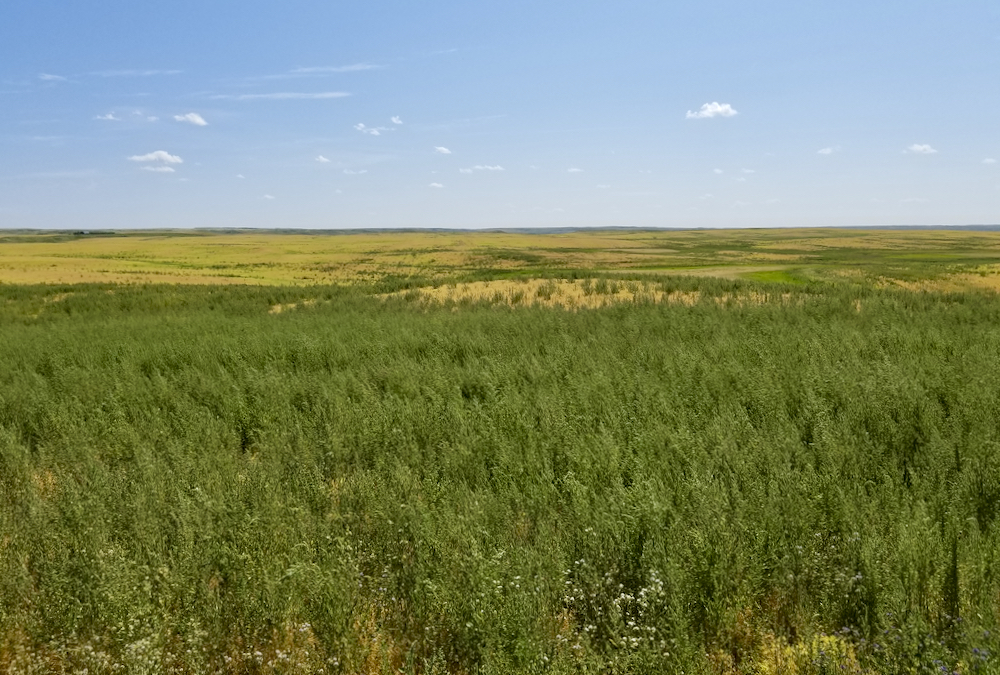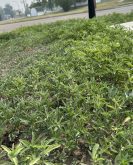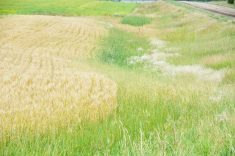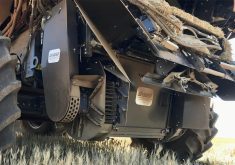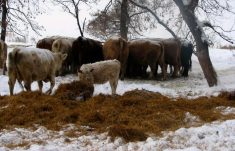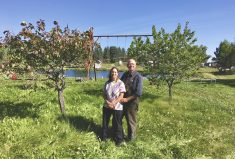This summer’s hot, dry conditions made weeds harder to manage this year — and that’s not good news for next year.
“This year, precipitation was one of the biggest driving factors for what we saw showing up in fields,” said federal research scientist Charles Geddes. “We ended up seeing a lot more flushes of weeds that were heavily dependent on rainfall events, which were unfortunately not as consistent as we would have liked them to be.”
As with other plants, dry conditions delay emergence for certain weed species, making it tricky to time herbicide applications. That’s what growers, especially in southern Alberta, found this year, said Geddes.
Read Also
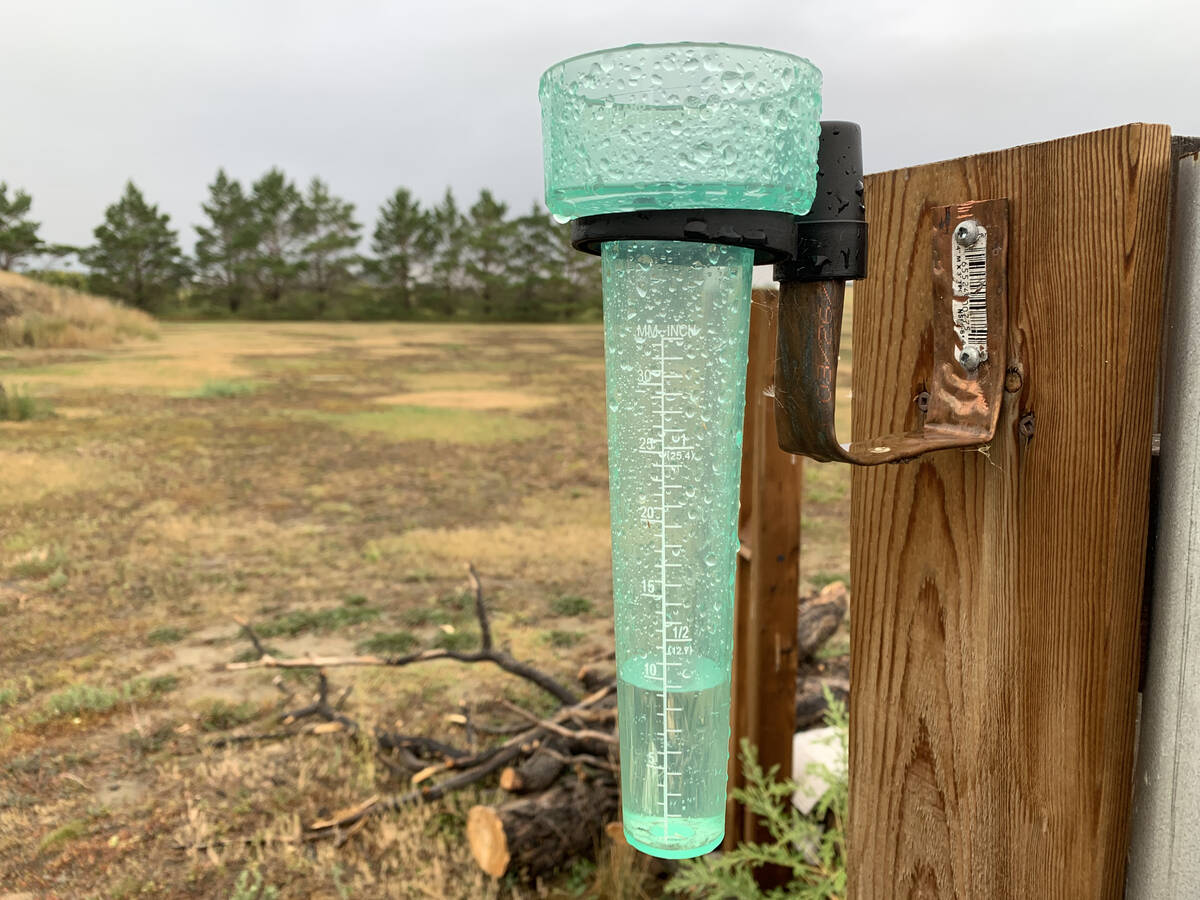
Western B.C., parts of Prairies received drought relief in October
Drought monitor for Western Canada for October
“You’re applying your pre-emergence herbicide while the conditions are still dry, but then you get a rainfall and a flush of weeds that come after that rainfall, which unfortunately would not have been caught by a burn-down herbicide,” he said. “That created a bit more weed pressure in crop.”
And herbicide applications aren’t as effective when it’s dry, he added.
“Plants that are actively growing more readily take up a herbicide, so the efficacy is generally improved under conditions that are good for plant growth and development,” said Geddes.
“Unfortunately, a greater number of weeds are escaping herbicide applications this year outside of what we would typically expect with herbicide resistance. I think this year there were likely a lot of issues with residual weed populations that were not caught with either a pre-emergence or post-emergence herbicide.”
On top of that, weeds that thrive in hot, dry conditions, such as kochia, had a competitive advantage while ones limited by growing degree days (again, like kochia) moved farther north because it was so hot.
“We’ve received reports of farmers finding kochia farther north in Alberta than they normally would in other years,” said Geddes. “My hope is that those populations were identified and removed as quickly as possible, because the unfortunate fact is that the warmer weather this year could facilitate a more northern expansion of some of those species.”
All of these factors may mean more weed issues in 2022.
“There certainly is an impact in the year where we see these poor weather events, but the big issue with weeds is that it doesn’t end this year,” he said. “The weather that we received this year is going to contribute to weed pressure next year as well.”
“There’s a greater likelihood those weeds went uncontrolled and produced seed, which went back into the soil seed bank. Usually where you have weed seeds entering the seed bank this year is where you’re going to have populations show up next year.”
And that’s another reason to hope for timely rains.
“My hope is that in the spring, we’ll see some more consistent moisture, which will help those weeds emerge early so that most of them can be caught with a pre-emergence herbicide, but that entirely depends on the weather.”
Biding their time
Disease levels were also impacted by the dry weather this year — but in this case, it meant lower levels and reduced severity.
“It’s not that we didn’t have disease. We just didn’t see a lot of really severe disease issues,” said provincial research scientist Michael Harding. “We more often saw fields that were suffering because of heat blast or lack of moisture than disease.”
Infection levels rely on all three sides of the ‘disease triangle’ being present — a host species, a pathogen species, and a conducive environment for the disease to develop. The pathogens are almost always present in the soil, so environmental factors are key.
“We don’t ever have a year where disease goes away,” said Harding. “The organisms that are best adapted to the local weather conditions are going to do better than the ones that aren’t as well adapted.
“So the environment didn’t eliminate disease. It just made it less of an issue.”
The two exceptions were blackleg in canola and bacterial leaf streak in irrigated cereal crops in southern Alberta.
“We actually had higher levels of blackleg in 2021 than we did the previous year,” he said. “The way the environmental conditions played out in Alberta in 2021 did not prevent or reduce the levels of blackleg in canola.”
Generally, diseases tend to thrive in warmer, wetter conditions, he added.
“Warm and wet is more conducive to disease than cold and dry,” said Harding. “So when we get cool summers without moisture, that really makes it challenging for a lot of micro-organisms to complete their life cycles.”
But there were pockets of the province that received higher levels of moisture, including the irrigated areas in the south, which also saw higher levels of diseases like sclerotinia stem rot or mycosphaerella in peas (though not as much as they might have with more summertime rainfalls).
“In those fields, there was a little bit more disease potential,” said Harding. “But the overall story was that there was reduced severity and, for some diseases, a lower incidence and prevalence. So we saw diseases in fewer fields and on fewer plants and lower severity for just about everything.”
But that doesn’t mean farmers can expect a repeat, he added.
“The weather is the big X-factor that’s going to make it really hard to predict what we’re going to see next year,” he said. “We could have an explosive disease year in 2022 if all three sides of the disease triangle come together.”
But disease management stays the same from year to year, regardless of the weather.
“If we’re scouting, evaluating our risk, using crop rotations, and using the best genetics that have some disease resistance, these practices and tools are going to be effective no matter what the weather does in 2022,” said Harding.
“We’ve seen drought years before followed up by wet years that have a lot of disease, so we just have to be ready for what’s coming.”

